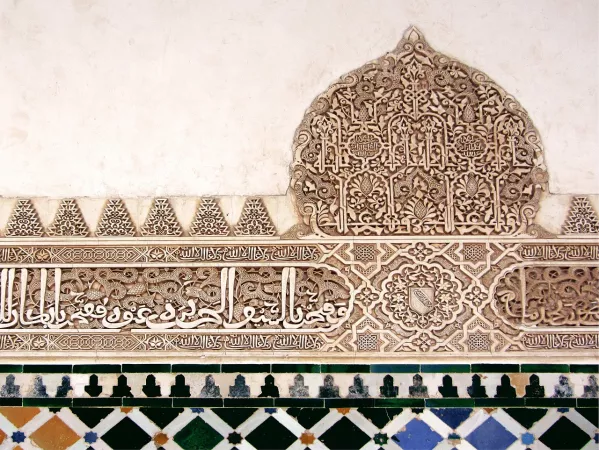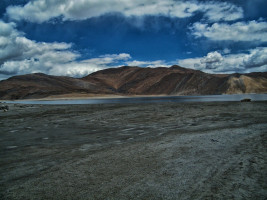Museum of Turkish and Islamic Arts Travel Guide
The Museum of Turkish and Islamic Arts is a cultural gem located in Istanbul, Turkey. This museum is renowned for its vast collection of artifacts that showcase the rich history and cultural significance of Turkey. Istanbul, a city steeped in history, offers visitors a glimpse into the glorious past of the Ottoman Empire and the Islamic world. The museum is a treasure trove of exquisite artwork, calligraphy, textiles, ceramics, and carpets that date back centuries, making it a must-visit destination for history buffs and art enthusiasts alike.Top Attractions in Museum of Turkish and Islamic Arts
- Stunning collection of Islamic calligraphy
- Beautiful Ottoman-era textiles and carpets
- Intricate ceramics and pottery
- Historical artifacts from the Islamic world
Museum of Turkish and Islamic Arts is Famous for
Its unparalleled collection of Islamic art and artifacts that offer a unique insight into the cultural heritage of Turkey.Top Attractions in Museum of Turkish and Islamic Arts
- Exploring the stunning collection of Islamic calligraphy
- Admiring the beautiful Ottoman-era textiles and carpets
- Marveling at the intricate ceramics and pottery
- Discovering historical artifacts from the Islamic world
What's Great about Travelling to Museum of Turkish and Islamic Arts?
- Immerse yourself in the rich history and culture of Turkey
- Experience the beauty of Islamic art and craftsmanship
- Learn about the Ottoman Empire and its legacy
What's Not So Great about Travelling to Museum of Turkish and Islamic Arts?
- Not ideal for those seeking modern art and contemporary exhibits
- Limited dining options in the vicinity
- May be crowded during peak tourist seasons
Travel Tips for Museum of Turkish and Islamic Arts
- Check the museum's opening hours and admission fees before your visit
- Respect the cultural and religious significance of the artifacts
- Wear comfortable shoes as the museum has a lot of walking involved
Important Museum of Turkish and Islamic Arts trip information
- Ideal Duration: Spend at least half a day exploring the museum
- Best Time to Visit: Early mornings or weekdays to avoid crowds
- Nearby Airports and Railway Stations: Istanbul Ataturk Airport and Sirkeci Railway Station
Per Person
13,000
*EXCLUDING APPLICABLE TAXES 3.7 Ratings
( 5 Reviews )
( 5 Reviews )
Per Person
55,000
*EXCLUDING APPLICABLE TAXES 3.7 Ratings
( 5 Reviews )
( 5 Reviews )
Per Person
19,500
*EXCLUDING APPLICABLE TAXES 5.0 Ratings
( 21 Reviews )
( 21 Reviews )
Per Person
44,999
*EXCLUDING APPLICABLE TAXES 4.6 Ratings
( 22 Reviews )
( 22 Reviews )
Per Person
19,750
*EXCLUDING APPLICABLE TAXES 4.9 Ratings
( 185 Reviews )
( 185 Reviews )
Total
17,999
*EXCLUDING APPLICABLE TAXES 3.7 Ratings
( 5 Reviews )
( 5 Reviews )
FAQ's on Museum of Turkish and Islamic Arts
Q1: What is the best time to visit Museum of Turkish and Islamic Arts?
The best time to visit the Museum of Turkish and Islamic Arts is during the spring and fall seasons when the weather is mild and perfect for exploring outdoor attractions. Additionally, try to plan your visit during weekdays to avoid crowds. Keep an eye out for any special exhibitions or events that may interest you.
Q2: Do I need a visa to travel to Museum of Turkish and Islamic Arts?
Tourists visiting the Museum of Turkish and Islamic Arts typically do not need a visa if they are staying for a short period. However, it is advisable to check the latest visa requirements based on your nationality before traveling.
Q3: What are the must-visit attractions in Museum of Turkish and Islamic Arts?
The Museum of Turkish and Islamic Arts is a treasure trove of artifacts including stunning Islamic calligraphy, ceramics, textiles, and carpets. Don't miss the impressive collection of Ottoman art and the intricately designed Seljuk pottery. The Museum's courtyard is also a serene spot to relax and admire the architecture.
Q4: Is Museum of Turkish and Islamic Arts a safe place to travel?
Museum of Turkish and Islamic Arts is a safe destination for tourists. However, like any other city, it's essential to be cautious of your surroundings and belongings, especially in crowded areas. Avoid walking alone at night and be mindful of pickpockets in touristy spots.
Q5: What is the local currency in Museum of Turkish and Islamic Arts and can I use credit cards?
The local currency in Museum of Turkish and Islamic Arts is the Turkish Lira. ATMs are widely available in the city, and credit cards are accepted in most hotels, restaurants, and shops. It's recommended to carry some cash for smaller establishments and markets.
Q6: What is the local cuisine like in Museum of Turkish and Islamic Arts?
The cuisine in Museum of Turkish and Islamic Arts is a delightful blend of Turkish and Islamic flavors. Indulge in dishes like kebabs, baklava, and mezes. Don't miss trying traditional Turkish tea or coffee. Vegetarian and vegan options are also available at many restaurants. Be sure to savor the diverse culinary delights during your visit.
Q7: What transportation options are available in Museum of Turkish and Islamic Arts?
Museum of Turkish and Islamic Arts offers various transportation options including buses, trams, and taxis for getting around the city. Renting a car is also a convenient way to explore the surrounding areas. Public transportation is efficient and affordable, making it easy to navigate the city and visit different attractions.
Q8: Are there any cultural norms or etiquette I should be aware of when visiting Museum of Turkish and Islamic Arts?
When visiting Museum of Turkish and Islamic Arts, it's important to dress modestly, especially when visiting religious sites. Respect local customs and traditions, such as removing your shoes before entering a mosque or someone's home. It's polite to greet locals with a smile and a simple "Merhaba" (hello) or "Teşekkür ederim" (thank you). Remember to be mindful of cultural sensitivities and enjoy your experience in this rich cultural destination.
Q9: I am a travel agent. How can I buy travel leads of Museum of Turkish and Islamic Arts?
Register yourself as a travel agent at agents.tripclap.com and then you can buy travel leads to Museum of Turkish and Islamic Arts once your account is approved. For more details contact our support team at +91-8069186564 or support@tripclap.com






